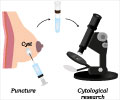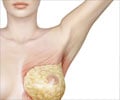Neratinib Medication Information
Discover comprehensive details about Neratinib, including its pronunciation, uses, dosage instructions, indications, and guidelines on how and when to take it or avoid it.
The updated prescription information covers potential side effects, precautions, warnings, and storage recommendations.
Additionally, explore the Neratinib brands available in India and internationally, along with pricing information. For personalized advice, consult your healthcare provider.
Generic Name : Neratinib Pronunciation : ne-RA-ti-nib Therapeutic Classification : ChemotherapyBrand Names or Trade Names of Neratinib
India :
Nerlynx
Overview of Neratinib
• Neratinib is an anti-cancer agent which was approved by US FDA in July 2017 to treat a certain type of breast cancer.Why is Neratinib Prescribed? (Indications)
Neratinib is prescribed as an adjuvant therapy to treat adult patients with an early stage HER2 - positive breast cancer who have been already treated with trastuzumab therapy at least for a year.Neratinib is a kinase inhibitor that acts by binding to certain proteins called Human Epidermal Growth Factor Receptor 2 (HER2), Epidermal Growth Factor Receptor (EGFR), and HER4 which is responsible for the growth of cancer cells.
When should Neratinib not be taken? (Contraindications)
Neratinib should not be used in patients with-• Allergy or hypersensitivity to neratinib drug
• Pregnancy and breastfeeding
What is the dosage of Neratinib?
• The recommended adult dose of neratinib is 240 mg (6 tablets) once a day taken continuously for 1 year.• Patients with severe liver disease require a reduction in dosage.
How should Neratinib be taken?
• Neratinib comes as a tablet which has to be taken by mouth along with food.• Take the neratinib tablets around the same time every day.
• The tablets should not be crushed, opened or split but should be swallowed as a whole with sufficient quantity of water.
What are the warnings and precautions for Neratinib?
• The antidiarrheal medicine loperamide 4mg should be taken during the treatment with neratinib thrice daily for the first two weeks, followed by twice daily for the next six weeks to avoid diarrhea which is a serious complication of neratinib treatment. The patient should be advised to maintain one to two motions per day with the medications.• Patients should be monitored for the symptoms of diarrhea (dehydration, hypotension) and should be treated with additional anti-diarrheal agents along with the administration of fluid and electrolytes if needed.
• Liver enzymes (AST, ALT, Alkaline phosphatase) and bilirubin levels should be monitored before starting the neratinib therapy and at monthly intervals for 3 months and 3 monthly after that during the treatment to detect the risk of liver damage at an early stage.
• Men and women of childbearing age should use effective contraceptive measures during the neratinib therapy to prevent pregnancy. Women should continue using the contraception for at least 1 month after the last dose, while male patients should continue using it for at least 3 months after stopping treatment. The treatment should be started in women only after a pregnancy test is confirmed as negative.
What are the side effects of Neratinib?
Common: Diarrhea, nausea, stomach pain, fatigue, vomiting, muscle pain, weight lossGastrointestinal: Dry mouth, upset stomach, stomatitis, reduced appetite
Cardiovascular: Low blood pressure
Respiratory: Bleeding from the nose
Skin: Rashes, dry skin, skin fissures, nail disorders, skin infection
Others: Increased level of liver enzymes, urinary tract infection, dehydration, kidney failure
What are the other precautions for Neratinib?
• Do not stop taking or change the dose of neratinib without physician’s advice.• Follow a special diet as advised to avoid or to control diarrhea.
• Drink plenty of fluids while on neratinib treatment.
• Seek or call an emergency center for help when serious side effects occur or medical attention if required.
What are the Drug Interactions of Neratinib?
• Antacids decrease the concentration of neratinib if taken together and therefore neratinib should be taken 3 hours after an antacid.• Neratinib should not be taken together with drugs such as ranitidine, omeprazole, pantoprazole or rabeprazole as these drugs may reduce the effect of neratinib in treating the disease.
• Avoid taking either grapefruit or grapefruit juice, or drugs like ketoconazole, boceprevir, clarithromycin with neratinib tablets; these prevent the breakdown on neratinib and could lead to unwanted side effects.
• Drugs like carbamazepine and rifampin induce the metabolism of neratinib and can reduce its effectiveness.
• Neratinib can increase the effect of drugs like digoxin. The concomitant use of the two drugs should therefore be avoided.
What are the storage conditions for Neratinib?
• Store at a room temperature between 20°C and 25°C.• Protect from excess moisture and heat.
• Keep away from the reach of children.











